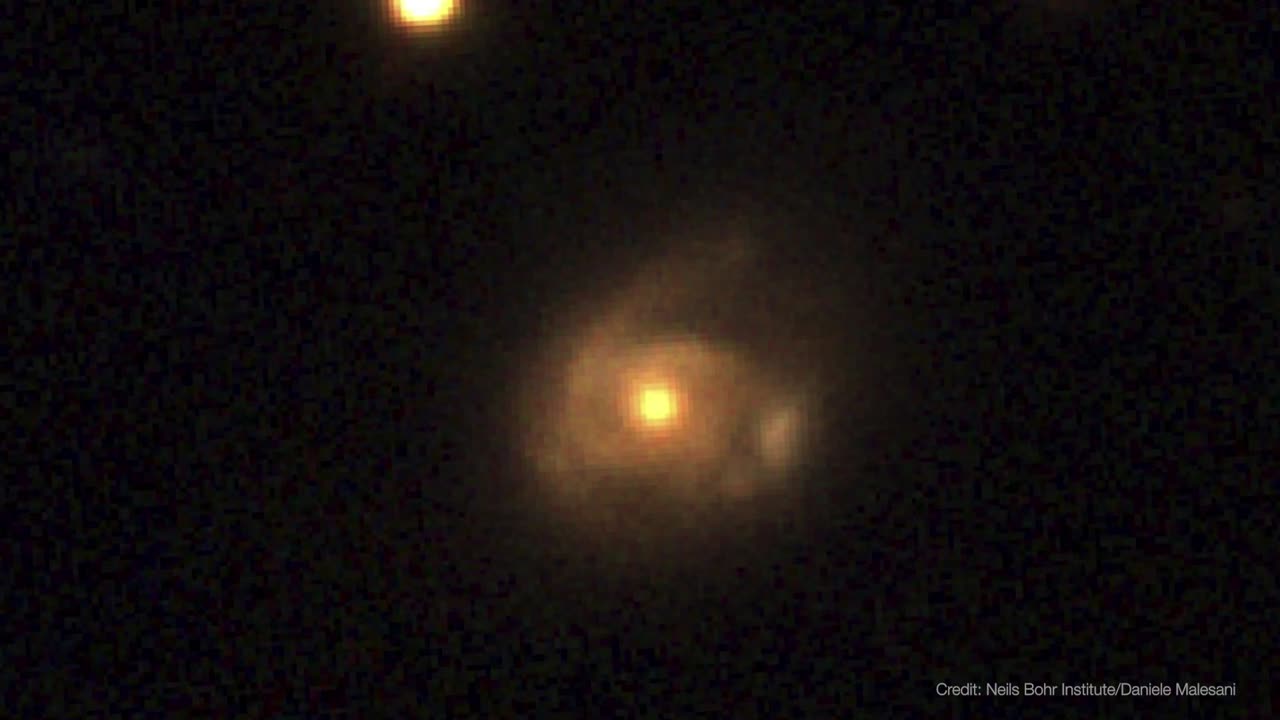Premium Only Content

Swift Spots a Snacking Black Hole Using a New Trick। NASA
Using NASA’s Neil Gehrels Swift Observatory, which launched in 2004, scientists have discovered a black hole in a distant galaxy repeatedly nibbling on a Sun-like star. The object heralds a new era of Swift science made possible by a novel method for analyzing data from the satellite’s X-ray Telescope (XRT).
When a star strays too close to a monster black hole, gravitational forces create intense tides that break the star apart into a stream of gas. The leading edge swings around the black hole, and the trailing edge escapes the system. These destructive episodes are called tidal disruption events. Astronomers see them as flares of multiwavelength light created when the debris collides with a disk of material already orbiting the black hole.
Recently, astronomers have been investigating variations on this phenomena, which they call partial or repeating tidal disruptions.
During these events, every time an orbiting star passes close to a black hole, the star bulges outward and sheds material, but survives. The process repeats until the star loses too much gas and finally breaks apart. The characteristics of the individual star and black hole system determine what kind of emission scientists observe, creating a wide array of behaviors to categorize.
On June 22, 2022, the XRT captured Swift J0230 for the first time. It lit up in a galaxy around 500 million light-years away in the northern constellation Triangulum. Swift’s XRT has observed nine additional outbursts from the same location roughly every few weeks.
Scientists propose that Swift J0230 is a repeating tidal disruption of a Sun-like star orbiting a black hole with over 200,000 times the Sun’s mass. They estimate the star loses around three Earth masses of material on each pass. This system provides a bridge between other types of suspected repeating disruptions and allowed scientists to model how interactions between different star types and black hole sizes affect what we observe.
Swift J0230’s discovery was possible thanks to a new, automated search of XRT observations called the Swift X-ray Transient Detector.
After the instrument observes a portion of the sky, the data is transmitted to the ground, and the program compares it to previous XRT snapshots of the same spot. If that portion of the X-ray sky has changed, scientists get an alert. In the case of Swift J0230, astronomers were able to rapidly coordinate additional observations of the region.
-
 LIVE
LIVE
TimcastIRL
1 hour agoBomb Threat At TPUSA, Bomb Squad Deployed For Controlled Detonation | Timcast IRL
29,053 watching -
 LIVE
LIVE
Barry Cunningham
1 hour agoBREAKING NEWS: DEMOCRATS SHUT DOWN THE GOVERNMENT! THEY HAVE UNLEASHED PRESIDENT TRUMP
1,949 watching -
 LIVE
LIVE
Nikko Ortiz
3 hours agoPTSD Is Fun Sometimes | Rumble LIVE
514 watching -
 23:02
23:02
Jasmin Laine
6 hours ago"Carney BROKE Ethics Laws!"—Liberal SPEECHLESS After Being Cornered On CTV
90213 -
 31:50
31:50
iCkEdMeL
2 hours ago $6.64 earnedMassive Protest Shuts Down Downtown Chicago Over ICE Crackdown
37.7K49 -
 17:17
17:17
Scammer Payback
6 hours agoHolding a Scammer's Computer HOSTAGE
664 -
 LIVE
LIVE
Flyover Conservatives
9 hours agoWhy Christians Should Embrace the Term “Christian Nationalist” | FOC Show
158 watching -
 LIVE
LIVE
Patriots With Grit
2 hours agoFinancial Reset, Charlie Kirk, Is The Military In Control? | Scotty Saks
50 watching -
 LIVE
LIVE
Anthony Rogers
6 hours agoEpisode 384 - Tristan Tritt
47 watching -
 LIVE
LIVE
LFA TV
22 hours agoBREAKING NEWS ALL DAY! | TUESDAY 9/30/25
600 watching